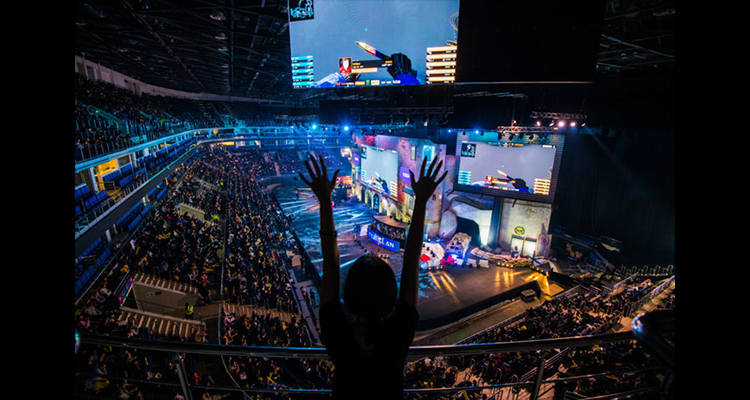Gaming the Industry: What’s In a Game?
 Last column, I went over some basic types of gamers based on preferred hardware. Beyond that, it’s worth understanding gaming genres, as it can relate to some particular accessory sales and furniture placement. I’m also going to paint in some broad strokes to keep this article from taking 18 years to read. But, rest assured, I’m sure there are plenty of good examples that I am leaving out, unfortunately.
Last column, I went over some basic types of gamers based on preferred hardware. Beyond that, it’s worth understanding gaming genres, as it can relate to some particular accessory sales and furniture placement. I’m also going to paint in some broad strokes to keep this article from taking 18 years to read. But, rest assured, I’m sure there are plenty of good examples that I am leaving out, unfortunately.
FPS: The First Person Shooter
This may be the most common image people — especially non-gamers go to while thinking about video games these days. Just imagine a gun floating in front of the screen while the user runs and jumps around maps like meth-addled crazy people (well, that may be just what I would look like) and enemies are sniped or mowed down by weapons. It’s especially common for console games in living rooms, although they have a particular following on PCs due to the extra control from mice and better graphics. The fist grand-daddy of of the FPS can be attributed to shareware titles like Wolfenstein 3D, Doom and Duke Nukem 3D.
These games are also some of the most profitable to produce — including Call of Duty: Ghosts and Battlefield 4 and everybody’s bro-tastic favorite: Halo. If you’re curious, the big hit this week is the release of Titanfall on the Xbox One. These AAA title games generally cost less than 75 million to produce, but gross hundreds of millions. The core of modern FPS is multi-player — called co-op. That means when you play, you aren’t alone — you’re connected to the Internet with your friends and using persistent live voice chat with headsets. While it’s easy to stereotype gamers as obsessive loners, the reality produces a very convincing and social experience with old and new friends. The downside to multi-player games is being inevitably matched with a random 12 year-old jerk (who will be six times better than you).
While most of these games could be easily classified as violent, don’t discount some very creative uses of FPS (or, I guess FP since there is very little shooting). One of my favorite games is Portal, and Portal 2 from the studio (and now digital game distribution behemoth) Valve. In these games you use a gun to create sticky entry and exit portals that can be applied to any surface in a diabolical puzzle room. You use physics to propel yourself through deadly courses to escape from a robotic compound. A similar good game is Quantum Conundrum. There also are some open-world format games like Skyrim that let you wander and interact with fantasy worlds and evolve your character as you take on missions. Before switching topics, I also recommend the steam-punk themed game Bioshock Infinite — great story, beautiful visuals (but still pretty violent). Sadly, the studio that made this great series just went out of business this week.
Third Person Shooters: The Kissing Cousin to the FPS
As the title suggests, you run a character with a bird’s eye virtual camera floating over the head. One of this year’s biggest hits was Grand Theft Auto 5 — a massive single player sandbox game. While there is a primary storyline, you are free to wander, drive and take as many missions as you have time for. Oh, and famously make dubious moral choices — such as beating prostitutes to death. Not that you have to… but the game doesn’t stop you either. (For the record, I find that as morally repulsive as hopefully you do.) One of the games I am personally playing is a third-person stealth game Assassin’s Creed: Black Flag. It enables you to do better in the game by killing more carefully without being detected. It’s a little more my speed, and it’s mostly single player. Plus, who doesn’t want to try living the life of an Edwardian era pirate? Other famous game series from the stealth genre are Thief, Splinter Cell and Hitman. Some of the most creative games that are kid-friendly have been the Lego-licensed franchise series of games, which include Star Wars, Indiana Jones, Harry Potter, Batman and now the Avengers. These are very creative third person puzzle games that kids (and adults) can get a kick out of together.
Platformers
These games were third-person before there was a term for it. Nintendo’s classic Mario 1-3 and Zelda were kind of third-person. Other early favorites include Prince of Persia and arcade cross-overs like Double Dragon. There used to be thousands of games in this space, basically until Nintendo started pushing the boundaries with the later Super Nintendo games and N64. Typically you are forced on one plane and your little person is forced to go left or right as well as fall and climb. Today, some of the most exciting games on the independent developer scene are modern takes on platformers. They are taking the concept of jumping and shooting and turning it on its head (sometimes literally). If you’re a fan and want to bring back that ’80s and ’90s experience, be sure to check out FEZ, And Yet It Moves, Super Meat Boy and — controversially — The Binding of Isaac. Also greatly entertaining is the PS3 series Little Big Planet 1 & 2, where a powerful 3D and physics engine is applied to a 2D plane — also great for kids.
So, like the last article, I realize that there are many more types of games to cover, but I will continue to cover more as this column continues in the future. If you have any questions or areas you’d like to see, please drop me a note at matt@ravepubs.com.





